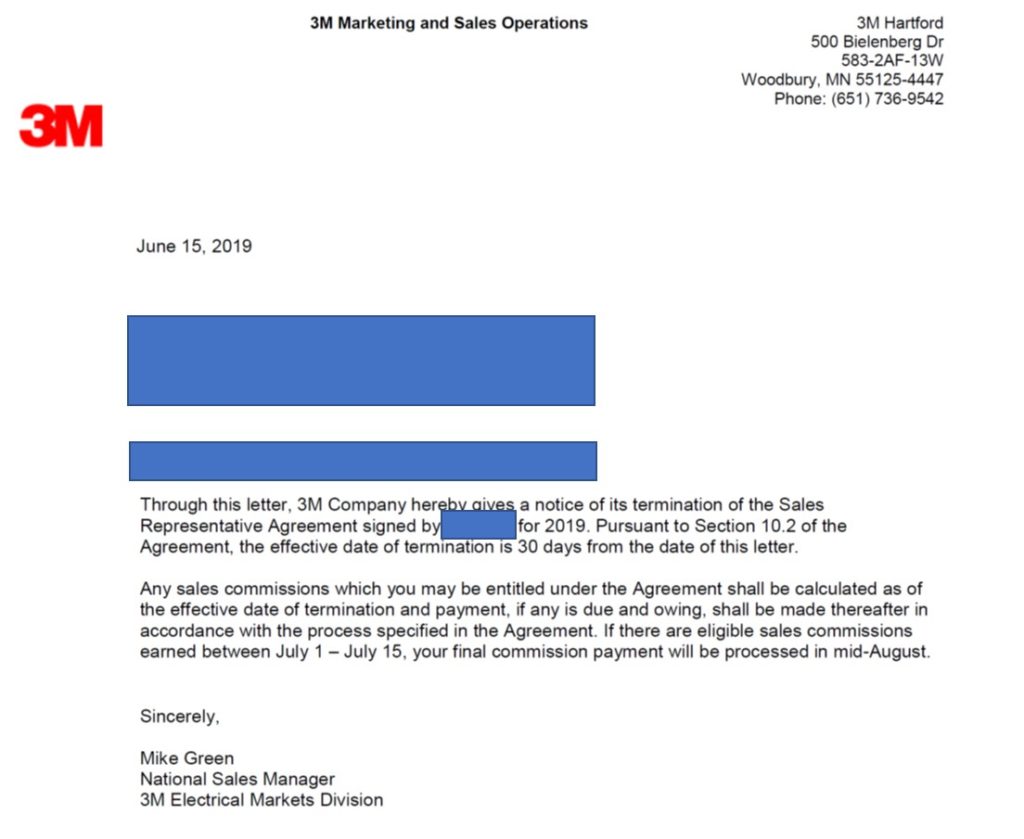3M Changes. Striving for Control?
3M’s recent decision to terminate most, if not all, of its remaining manufacturer reps may have represented the culmination of a decision to drive the business in a different direction where the company believes that its brand is strong enough to drive contractor / end-customer demand and preference and that “the channel” will respond to its customers.
Over the past few years the company has:
- Terminated some reps a few years ago to go to a direct sales model in selected markets
- Ended its relationship with IMARK and reportedly altered its relationship with AD
- Launched a “preferred” distributor program for selected distributors that provided partial funding for sales support and a rebate program driven strictly on growth.
- Compensated distributors for providing customer level POS information while providing gap analysis reporting that could be used to better tailor distributor inventory
- Launched end-user demand generation marketing initiatives.
- Informed, perhaps nicely, that smaller distributors were “less important”.
In the face of this marketplace disruption and, some may say, “distributor discord”, many reps helped 3M position the change with the distributors to retain much of the business in the face of these corporate decisions. They were able to utilize their longstanding personal, local, relationships to “live another day.”
This isn’t to say that a company shouldn’t change strategies, but much of 3M’s offering is consumable items. Part of the business is focused on the industrial market and could be part of contracts and/or speced. Part is sold to electrical contractors, who, while may have some preference, can also be influenced to try comparable brands as evidenced by other companies launching tape lines that are gaining some traction.
And, perhaps coincidentally, 3M reported disappointing Q1 2019 results with the Industrial segment, which includes the electrical group, being down 6.6%. But this only may have affected timing, according to reps.

Now, with the termination of these reps, 3M is adding another change to its model. Perhaps they are thinking that adding direct people (and hence a fixed labor cost as well as absorbing the potential HR issues let alone training, vehicle management, benefits, etc costs) without distribution or end-user experience (and probably relationships) will provide them with more control and enable management to direct their staff to call on end-users and that this will increase sales and that distributor loyalty will follow.
This isn’t the first time that 3M has terminated reps as the did similar in the late ‘90s and then rehired reps when they lost significant consumables (contractor) business. While brand helps, a visible sales organization that knows how to navigate distribution helps. In 3M’s case they had reps with longevity – Synergy Electrical Sales represented them for 16 years. Phoenix Sales & Marketing was their 3rd rep and had the line for over 20 years. Other long-tenured reps included RD Wright Co in upstate NY, Bell and McCoy, Thea & Schoen, Riffle & Associates, Meglio & Associates to name a few, All of this speaks to some serious relationships and consistency in the marketplace.
And, in reality, it comes down to philosophy. Which sales model do you believe in? In the words of one manufacturer, “reps are an extension of our team” and “we’re part of their investment portfolio.” It doesn’t mean that there isn’t periodic strife, conflict or change but it’s a philosophical approach. And yes, direct sales provides a manufacturer with more personnel control (and the corresponding management responsibilities.)
From a distributor viewpoint, the question is, “where is my salesperson?” While distributor inside and purchasing staff may speak with a rep multiple times a week (based upon the number of lines they purchase), how frequently will the 3M salesperson call on the distributor and/or be available for various support issues? To date there hasn’t been mention of the number of salespeople that 3M is hiring or information by territory. From experience it should be 1 direct salesperson per $2-3 million and much depends upon region density.
Now, it may be possible that 3M is seeing a change in their business with more of it going through other channels and perhaps online and hence the role of distribution changes (fulfillment and credit) and sales becomes more of a demand generation audience. This may occur in the hand tool market with more sales through big boxes and online and perhaps in the test / measurement market as an increasing percent of this product category is purchased online. While reps may create demand, if the product is purchased online via someone like Amazon, the rep doesn’t earn commission. Is adding a direct person essentially a marketing expense … a fixed cost designed to generate demand and be channel agnostic? Is this good for electrical distributors?
It’s interesting that after 20 years of a sales model that has helped a company drive growth and build its brand within the industry, that a company that has undergone as much change as 3M is willing to terminate all and invest in a direct salesforce. Hiring 50, 100, 100+ qualified salespeople in today’s labor market, cost-effectively? While they lose the benefit of a variable cost model, they also lose the synergy of a sales organization that can call on essentially every distributor in a market (as a rep usually sells something to everyone in a market). Losing those deep relationships infers that 3M believes that the relationships are fungible and the brand will drive distributor decisions.
Time will tell if this change is successful or will history repeat itself and 3M seek to reestablish a rep network in the future as history has a tendency to repeat itself (but will reps respect the brand and trust management to give it another try?)
If you’re a distributor, for this type of line, would you typically prefer a direct salesperson or a rep? Will brands rule and drive distributor decisions or can distributors sell their recommended suppliers?
To use a phrase popularized in 1765 with the Stamp Act that led to the Boston Tea Party, “no taxation without representation”, will distributors ask say “no sales (or purchases) without representation?”
























